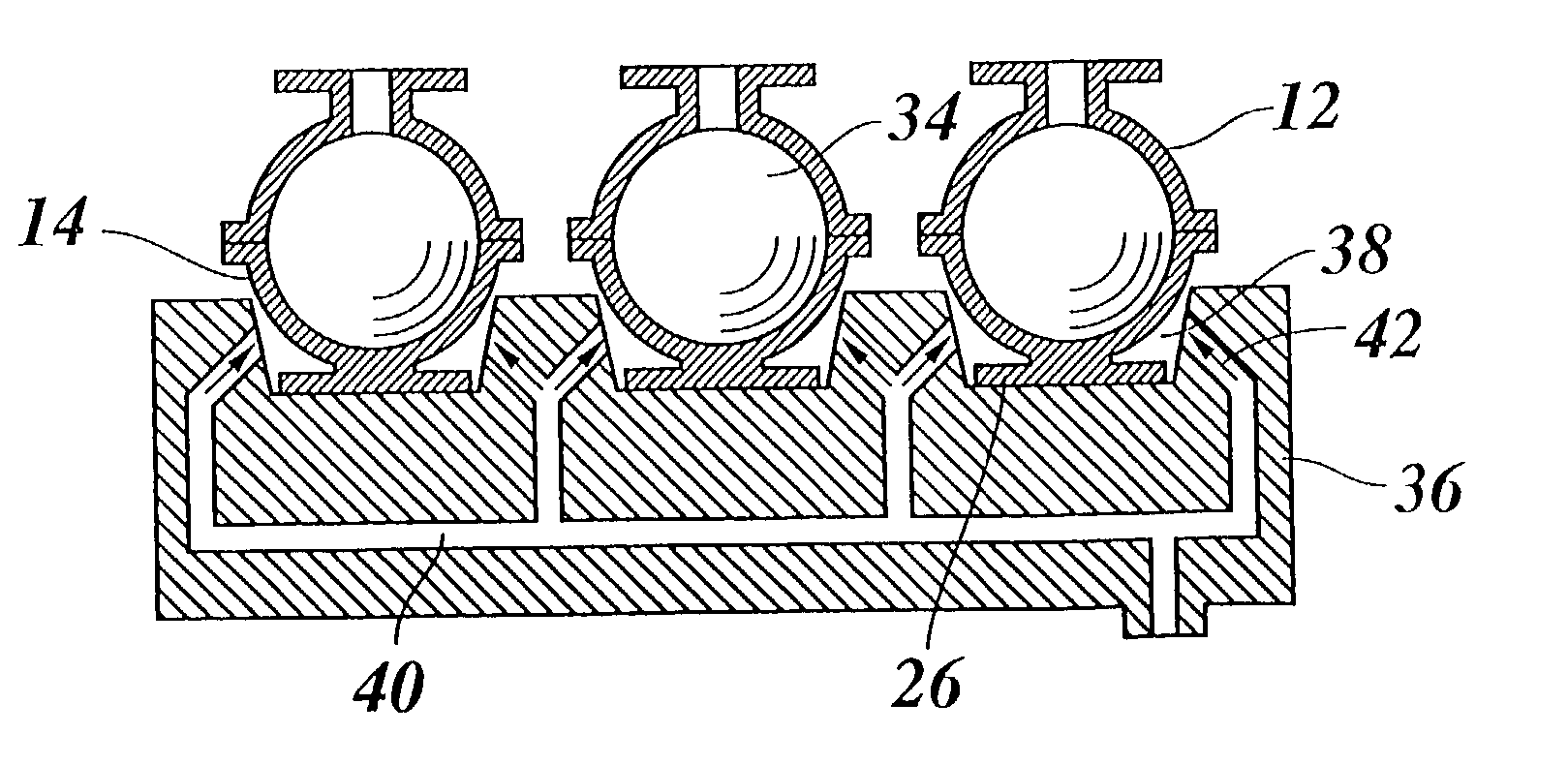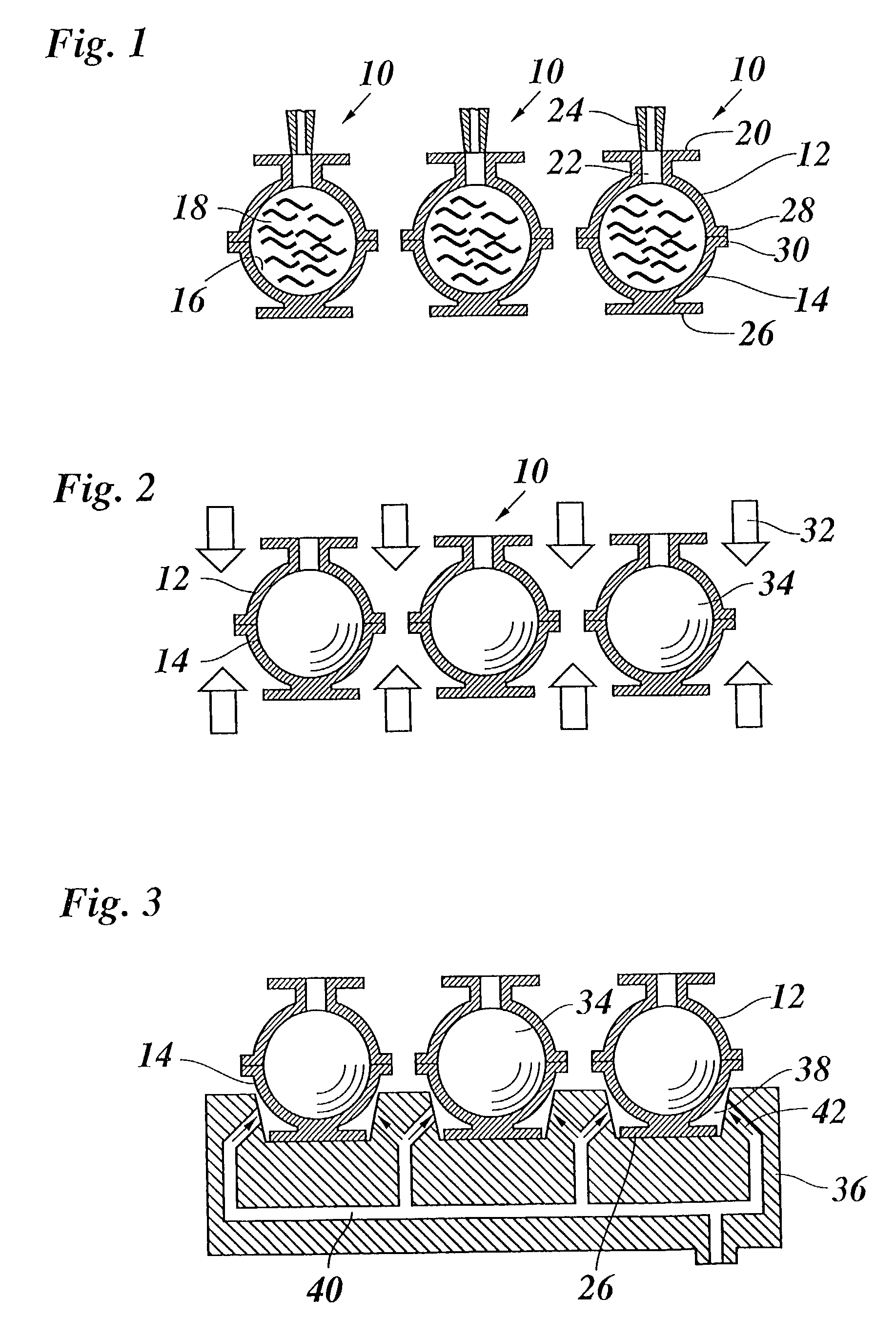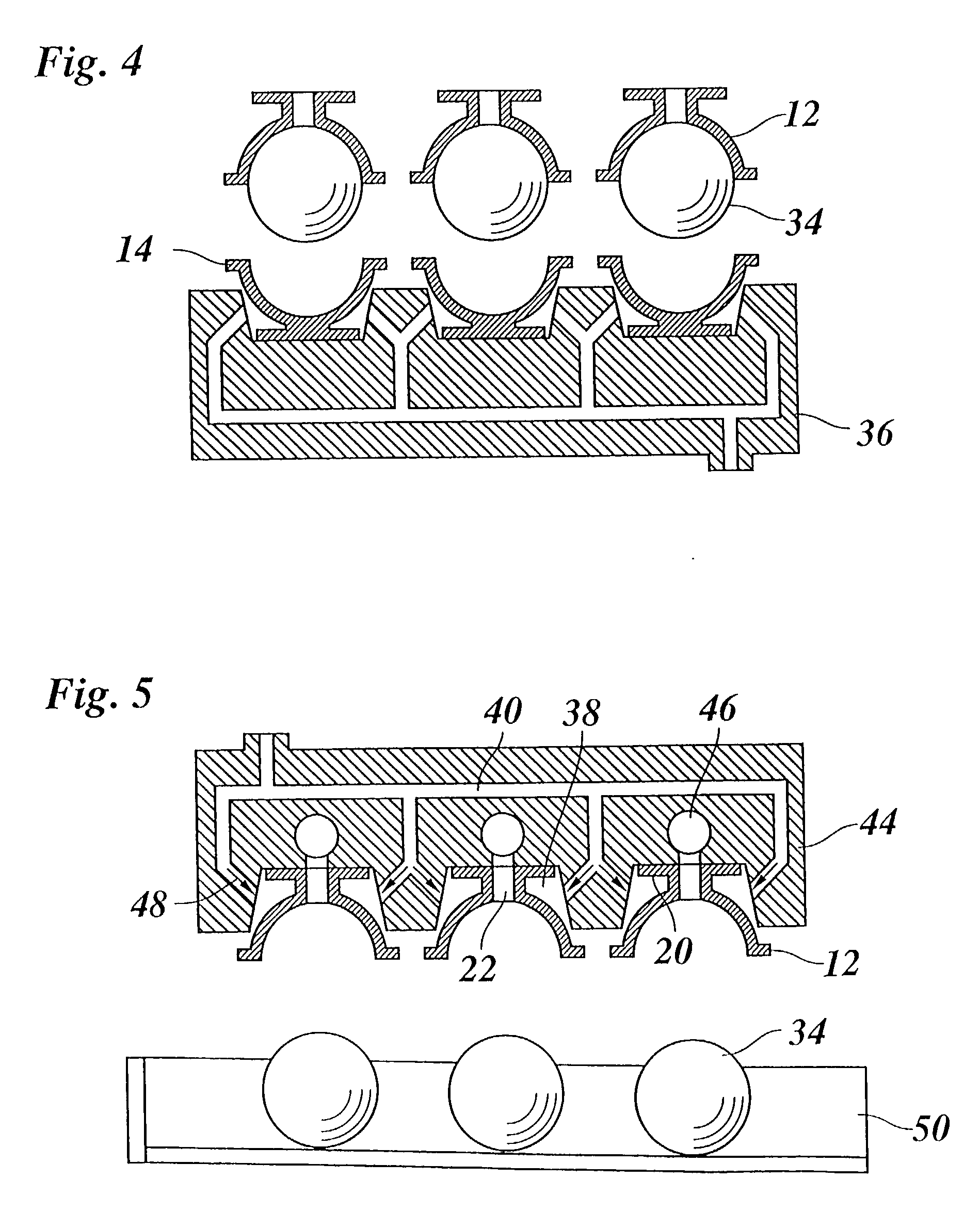Method and device for manufacturing pellets of hot-melt ink
a technology of hot-melt ink and pellets, which is applied in the directions of cocoa, dough shaping, printing, etc., can solve the problems of increasing the tendency of pellets to adhere to the walls of mold cavities, reducing the temperature of ink reservoirs, and reducing the production efficiency of hot-melt ink
- Summary
- Abstract
- Description
- Claims
- Application Information
AI Technical Summary
Benefits of technology
Problems solved by technology
Method used
Image
Examples
Embodiment Construction
[0022] FIG. 1 shows a group of three molds 10, each of which comprises an upper die 12 and a lower die 14 each of which have a semi-spherical cup shape and, together, define a mold cavity 16 which is filled with molten hot-melt ink 18. The upper die 12 is integrally formed with a top flange 20 and has a runner hole 22 formed in the center of the flange 20, so that molten ink can be poured into the mold cavity 18 through a nozzle 24.
[0023] The lower die 14 is essentially mirror-symmetric relative to the upper die 12 and is supported on a bottom 26 formed integrally therewith. The lower edge of the upper die 12 and the upper edge of the lower die 14 are surrounded by circumferential flanges 28, 30 which are held in firm engagement with one another in order to sealingly close the mold cavity 16.
[0024] When the ink 18 has been poured in, as is shown in FIG. 1, the molds are transferred to a cooling stage illustrated in FIG. 2, where cold air 32 is blown against the outer surfaces of the...
PUM
| Property | Measurement | Unit |
|---|---|---|
| thickness | aaaaa | aaaaa |
| temperature | aaaaa | aaaaa |
| thickness | aaaaa | aaaaa |
Abstract
Description
Claims
Application Information
 Login to View More
Login to View More - R&D
- Intellectual Property
- Life Sciences
- Materials
- Tech Scout
- Unparalleled Data Quality
- Higher Quality Content
- 60% Fewer Hallucinations
Browse by: Latest US Patents, China's latest patents, Technical Efficacy Thesaurus, Application Domain, Technology Topic, Popular Technical Reports.
© 2025 PatSnap. All rights reserved.Legal|Privacy policy|Modern Slavery Act Transparency Statement|Sitemap|About US| Contact US: help@patsnap.com



